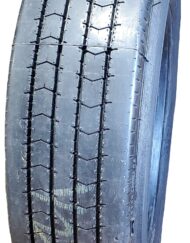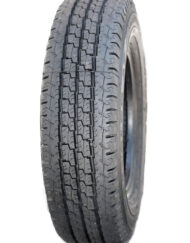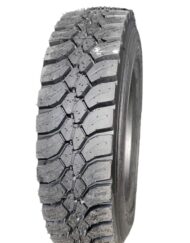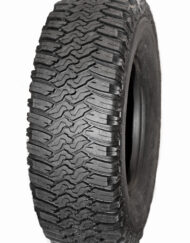Make it a Match Made in Heaven: Dual Wheel Positions
Mismatched tires can lead to a host of problems, particularly on dual wheel positions. One of the biggest issues is that tire retreading can be compromised, causing a safety hazard. In fact, using mismatched dual wheels can have the same negative impact on the life of your tires as if you were driving with over or under inflation. Because larger tires carry greater loads, when they are mismatched, their tread will wear faster and less evenly.
It doesn’t take much of a difference to increase this risk, either. In fact, a variance in inflation of just 15 psi can require the more inflated tire to support 500 additional pounds than the tire that has less air. It’s similar to when two tires each have a different radius. A deviance of just ¼ inch in diameter could result in the larger tire bearing 600 more pounds than the smaller one. The greater the difference is in either the size or inflation of the retread tires, the greater the risk to the vehicle and driver.
In addition to ensuring that the diameter and inflation pressure of all tires on dual wheel positions are uniform, it’s equally important to avoid mixing radials and bias ply tires on the same axle. This is due to the fact that the deflection/load characteristics of mixed tires can differ significantly. For instance, radial tires tend to deflect more than bias ply tires. Mixing the two with dual wheels on the same axle will lead to the bias ply tires bearing the brunt of the load, which could cause an overload, reduction in mileage and early failure.
The overall the diameter of a radial tire controls the number of revolutions per mile on that tire. With dual wheels, it’s important to match the tire revolutions per mile as closely as possible, similar to how an inter-axle differential is locked out or doesn’t exist. Without this precaution, the drive transmission could freeze or fail completely. Furthermore, excessive slip on one set of tires could result in uneven wear and a subsequent loss of traction.
For twin screw rear axles that are tandem drive, all eight tires must be matched accordingly so that the diameter on each tire on one axle does not exceed ¼ size difference from the other axle. This rule applies to all over-the-road trucks, regardless of tire size. Equal pressure across all tires should also be maintained. For this reason, new or retread tires on tandem driving axles should be regularly inspected and matched accordingly.
The following guideline should be adhered to in order to properly manage the dual matching requirements:
Tire Size
Diameter (Inches) Radius (Inches) Circumference (Ins)
8.25R20 and below 0 to 1/4 0 to 3/4 0 to 1/8
9.00R20 and above 0 to 1/2 0 to 1-1/2 0 to 1/4
Twin screw (all sizes) 0 to 1/4 0 to 3/4 0 to 1/8
The measurement and subsequent matching of dual wheels is crucial when mounting a new set of radial tires. It’s important to note that tires of the same size and type of casing may not actually have the same overall diameter. This ultimately depends on the service they were subjected to prior to the tire retreading process. As long as the difference in diameter between the tires falls within the limits above, they should be acceptable.Mold cure retreads are, however, the same height due to the fixed size of the mold. This eliminates height variation woes.
The information above should provide a valid argument for the importance of matching retread tires on dual wheel positions. Doing so will significantly reduce the risk of tire problems and also improve the chances that your worn tires can be successfully retread again. This can reduce overall costs, making it a win-win all around.
Have more questions about this or other topics surrounding retread tires or the tire retreading process? Contact us today. We’d be happy to help!




